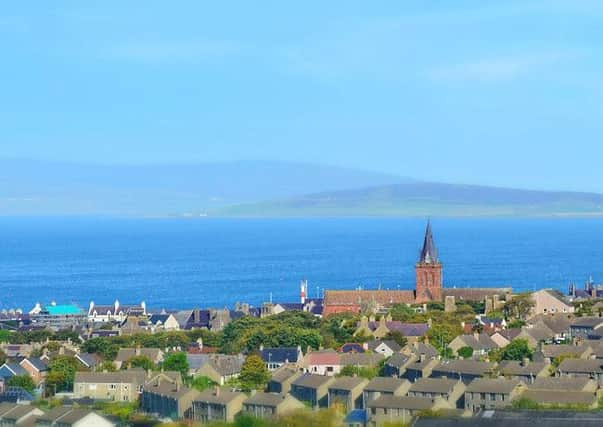Orkney enjoys highest rise in disposable income in Scotland
This article contains affiliate links. We may earn a small commission on items purchased through this article, but that does not affect our editorial judgement.


The spending power of Orcadians - after tax and national insurance are taken care of - increased by 137 per cent in cash terms over just six years, official figures show.
The rise was recorded at 69 per cent in real terms once inflation has been taken into account.
Advertisement
Hide AdAdvertisement
Hide AdOrkney is now third highest level of Gross Disposable Household Income (GDHI) in Scotland with an average of £18,722 to spend on food, drink, household bills, savings and other items.
This is £1,627 more than the Scottish average, which now sits at £17,095.
Claire Ross, senior economist with Highlands and Islands Enterprise, said Orkney was benefitting from a diverse and resilient economy.
High levels of self-employment - around 20 per cent of working population on Orkney - typically led to higher wages with a good mix of traditional and more modern industries generating wealth on the islands.
She said: “Orkney has always done well in terms of farming, crofting, food and drink and tourism . These are the mainstay of the rural economy and have been for many years.
“What we have been seeing is a growth of businesses being set up as a lifestyle choice, perhaps in marketing, media and freelancing opportunities.
“On Orkney, there has also been a huge focus on research and development opportunities linked to the European Marine Energy Centre (EMEC).
“This has also brought a different type of person to the area. We are seeing an increase in graduates within the workforce which also brings with it higher salaries.”
Advertisement
Hide AdAdvertisement
Hide AdMigration of older residents with disposable income also added to the picture, Ms Ross added.
Five of the 10 areas of Scotland where disposable income rose the most between 1997 and 2013 are in Highlands and Islands, according to a briefing for the Scottish Parliament Information Centre (SPICE).
Inverness, Nairn and Moray; Shetland Isles; Caithness and Sutherland and Lochaber alongwith Skye and Lochalsh have all experienced a rise in personal spending power, alongwith Orkney.
Ms Ross said: “Over that period, there has been substantial investment in transport connections and digital and physical infrastructure. We have been really focussed on community capacity and improving conditions that are important to a rural economy.
“There have been significant changes across the region to improve the prosperity of the Highlands and Islands.”
According to the SPICE briefing, residents of Aberdeen and Aberdeenshire still have the highest rate of GDHI at £20,547. It was the only region to be in the top 20 per cent in the UK.
This was followed by Edinburgh at £19,481, although sharp decreases have been recorded in these high-performing areas in recent times.
Disposable income in the capital dropped by just over 4 per cent in real terms between 2013 and 2014. In Aberdeen, a drop of just over 1 per cent was recorded over the same period.
Advertisement
Hide AdAdvertisement
Hide AdAs spending power dipped in these two major cities, seven clusters of Scotland enjoyed a rise in GDHI in real terms.
They were Eilean Sar, East and North Ayrshire, West Lothian, Caithness & Sutherland and Ross and Cromarty, Inverness and Nairn and Moray, Scottish Borders and Orkney.
The areas are classified by EU recording standards.
Glasgow City has the lowest levels of disposable income at £14,757 with residents of North Lanarkshire, Eilean Sar, Falkirk and Aggus and Dundee City also having some of the smallest spending power in Scotland.
Scotland recorded a growth in disposable income of 28 per cent between 1997 and 2013. Glasgow City and Perth and Kinross and Stirling were amongst nine areas where rises in disposable income were less than the national average.
DOWNLOAD THE SCOTSMAN APP ON ITUNES OR GOOGLE PLAY